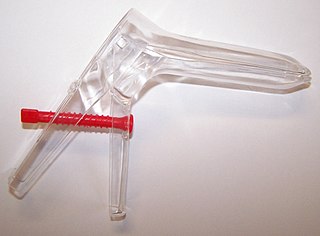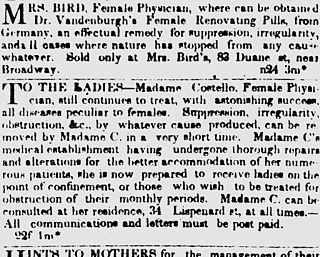Related Research Articles

Ephesus was a city in Ancient Greece on the coast of Ionia, 3 kilometres (1.9 mi) southwest of present-day Selçuk in İzmir Province, Turkey. It was built in the 10th century BC on the site of Apasa, the former Arzawan capital, by Attic and Ionian Greek colonists. During the Classical Greek era, it was one of twelve cities that were members of the Ionian League. The city came under the control of the Roman Republic in 129 BC.

A spoonerism is an occurrence of speech in which corresponding consonants, vowels, or morphemes are switched between two words of a phrase. These are named after the Oxford don and priest William Archibald Spooner, who reputedly did this.
Year 396 BC was a year of the pre-Julian Roman calendar. At the time, it was known as the Year of the Tribunate of Saccus, Capitolinus, Esquilinus, Augurinus, Capitolinus and Priscus. The denomination 396 BC for this year has been used since the early medieval period, when the Anno Domini calendar era became the prevalent method in Europe for naming years.

A speculum is a medical tool for investigating body orifices, with a form dependent on the orifice for which it is designed. In old texts, the speculum may also be referred to as a diopter or dioptra. Like an endoscope, a speculum allows a view inside the body; endoscopes, however, tend to have optics while a speculum is intended for direct vision.

Lithotomy from Greek for "lithos" (stone) and "tomos" (cut), is a surgical method for removal of calculi, stones formed inside certain organs, such as the urinary tract, bladder, and gallbladder (gallstones), that cannot exit naturally through the urinary system or biliary tract. The procedure is usually performed by means of a surgical incision. Lithotomy differs from lithotripsy, where the stones are crushed either by a minimally invasive probe inserted through the exit canal, or by an acoustic pulse, which is a non-invasive procedure. Because of these less invasive procedures, the use of lithotomy has decreased significantly in the modern era.

Aulus Cornelius Celsus was a Roman encyclopaedist, known for his extant medical work, De Medicina, which is believed to be the only surviving section of a much larger encyclopedia. The De Medicina is a primary source on diet, pharmacy, surgery and related fields, and it is one of the best sources concerning medical knowledge in the Roman world. The lost portions of his encyclopedia likely included volumes on agriculture, law, rhetoric, and military arts. He made contributions to the classification of human skin disorders in dermatology, such as myrmecia, and his name is often found in medical terminology regarding the skin, e.g., kerion celsi and area celsi. He is also the namesake of Paracelsus, a great Swiss alchemist and physician prevalent in the Medical Renaissance.
Brian Martin is a social scientist in the School of Humanities and Social Inquiry, Faculty of Arts, Social Sciences and Humanities, at the University of Wollongong (UOW) in NSW, Australia. He was appointed a professor at the university in 2007, and in 2017 was appointed emeritus professor. His work is in the fields of peace research, scientific controversies, science and technology studies, sociology, political science, media studies, law, journalism, freedom of speech, education and corrupted institutions, as well as research on whistleblowing and dissent in the context of science. Martin was president of Whistleblowers Australia from 1996 to 1999 and remains their International Director. He has been criticized by medical professionals and public health advocates for promoting the disproven oral polio vaccine AIDS hypothesis and supporting vaccine hesitancy in the context of his work.
Diocles of Carystus was a well-regarded Greek physician, born in Carystus, a city on Euboea, Greece. His significance was as a major thinker, practitioner, and writer of the fourth century.
Jamae Kathryn Campbell is an American folk singer-songwriter.

The practice of induced abortion—the deliberate termination of a pregnancy—has been known since ancient times. Various methods have been used to perform or attempt abortion, including the administration of abortifacient herbs, the use of sharpened implements, the application of abdominal pressure, and other techniques. The term abortion, or more precisely spontaneous abortion, is sometimes used to refer to a naturally occurring condition that ends a pregnancy, that is, to what is popularly called a miscarriage. But in what follows the term abortion will always refer to an induced abortion.

The Library of Celsus is an ancient Roman building in Ephesus, Anatolia, today located near the modern town of Selçuk, in the İzmir Province of western Turkey. The building was commissioned in the years 110s CE by a consul of the Roman Empire, Tiberius Julius Aquila Polemaeanus, as a funerary monument for his father Tiberius Julius Celsus Polemaeanus, former proconsul of Asia, and completed during the reign of the Roman Emperor Hadrian, sometime after Aquila's death.

Raymond Joseph Hoffmann is a historian whose work has focused on the early social and intellectual development of Christianity. His work includes an extensive study of the role and dating of Marcion in the history of the New Testament, as well the reconstruction and translation of the writings of early pagan opponents of Christianity: Celsus, Porphyry and Julian the Apostate. As a senior vice president for the Center for Inquiry, he chaired the Committee for the Scientific Examination of Religion, CSER, where he initiated the Jesus Project, a scholarly investigation into the historicity of Jesus. Hoffmann has described himself as "a religious skeptic with a soft spot for religion".

The Montefortino helmet was a type of Celtic, and later Roman, military helmet used from around 300 BC through the 1st century AD with continuing modifications. This helmet type is named after the region of Montefortino in Italy, where a Montefortino helmet was first uncovered in a Celtic burial. The Montefortino helmet originated in the 4th century BCE and was influenced by Etruscan and Celtic helmets. The helmet was brought to Italy by the Senones and it was the most popular helmet amongst the Roman army during the Republican period. The Montefortino helmet remained the most popular Roman helmet until the first century CE. Although in the Roman military it was replaced by the Coolus helmet, it continued to be used by the Praetorian guard.

Medicine in ancient Rome was highly influenced by ancient Greek medicine, but also developed new practices through knowledge of the Hippocratic Corpus combined with use of the treatment of diet, regimen, along with surgical procedures. This was most notably seen through the works of two of the prominent Greek physicians, Dioscorides and Galen, who practiced medicine and recorded their discoveries. This is contrary to two other physicians like Soranus of Ephesus and Asclepiades of Bithynia, who practiced medicine both in outside territories and in ancient Roman territory, subsequently. Dioscorides was a Roman army physician, Soranus was a representative for the Methodic school of medicine, Galen performed public demonstrations, and Asclepiades was a leading Roman physician. These four physicians all had knowledge of medicine, ailments, and treatments that were healing, long lasting and influential to human history.

De Medicina is a 1st-century medical treatise by Aulus Cornelius Celsus, a Roman encyclopedist and possibly a practicing physician. It is the only surviving section of a much larger encyclopedia; only small parts still survive from sections on agriculture, military science, oratory, jurisprudence and philosophy. De Medicina draws upon knowledge from ancient Greek works, and is considered the best surviving treatise on Alexandrian medicine. It is also the first complete textbook on medicine to be printed, and has an "encyclopedic arrangement that follows the tripartite division of medicine at the time as established by Hippocrates and Asclepiades – diet, pharmacology, and surgery." This work also covers the topics of disease and therapy. Sections detail the removal of missile weapons, stopping bleeding, preventing inflammation, diagnosis of internal maladies, removal of kidney stones, the amputation of limbs and so forth.

The Dogmatic school of medicine was a school of medicine in ancient Greece and Rome. They were the oldest of the medical sects of antiquity. They derived their name from dogma, a philosophical tenet or opinion, because they professed to follow the opinions of Hippocrates, hence they were sometimes called Hippocratici. Thessalus, the son, and Polybus, the son-in-law of Hippocrates, were the founders of this sect, c. 400 BC, which enjoyed great reputation, and held undisputed sway over the whole medical profession, until the establishment of the Empiric school. After the rise of Empiric school, for some centuries, every physician counted himself under either one or the other of the two parties. The most distinguished among this school were Diocles of Carystus, Praxagoras of Cos, and Plistonicus. The doctrines of this school are described by Aulus Cornelius Celsus in the introduction to his De Medicina.

The Altıkulaç Sarcophagus, or Çan sarcophagus, is an early 4th century BCE sarcophagus. It is sometimes said to be in the Greco-Persian style. The sarcophagus was found in 1998 in a circular corbel-vaulted tomb within the Çingenetepe tumulus, in the village of Altıkulaç, near Çan, in the eastern Troad, about halfway between Troy and Daskyleion, in what was anciently Hellespontine Phrygia. It was looted and damaged in the process, but a large part of the reliefs remained intact. It is made of painted marble carved in low relief, and dated to the 1st quarter 4th century BCE. It was made at about the same time as the famous tombs in Lycia.

Ancient Roman surgical practices developed from Greek techniques. Roman surgeons and doctors usually learned through apprenticeships or studying. Ancient Roman doctors such as Galen and Celsus described Roman surgical techniques in their medical literature, such as De Medicina. These methods encompassed modern oral surgery, cosmetic surgery, sutures, ligatures, amputations, tonsillectomies, mastectomies, cataract surgeries, lithotomies, hernia repair, gynecology, neurosurgery, and others. Surgery was a rare practice, as it was dangerous and often had fatal results. To perform these procedures, they used tools such as specula, catheters, enemas, bone levers, osteotomes, phlebotomes, probes, curettes, bone drills, bone forceps, cupping vessels, knives, scalpels, scissors, and spathas.
Modern historians' knowledge of ancient Roman gynecology and obstetrics primarily comes from Soranus of Ephesus' four-volume treatise on gynecology. His writings covered medical conditions such as uterine prolapse and cancer and treatments involving materials such as herbs and tools such as pessaries. Ancient Roman doctors believed that menstruation was designed to rid the female body of excess fluids. They believed that menstrual blood had special powers. Roman doctors may also have noticed conditions such as premenstrual syndrome.
Dentistry developed during the early parts of Roman history, which may be due to the arrival of a Greek doctor named Archagathus. Ancient Roman oral surgical tools included the curettes, osteotomes, cauteries, scalpels, bone forceps, and bone levers. The ancient Romans invented the usage of narcotics during dental surgery. These tools were used to treat conditions such as toothache and to extract teeth. It was believed in ancient Rome that the cause of the conditions that necessitated such treatment was a "tooth worm."
References
- 1 2 "Ancient Medical Instruments" . Retrieved 26 June 2015.
- ↑ Archaeological Remains as a Source of Evidence for Roman Medicine, by Patricia A. Baker, in Medicina Antiqua, published 2009; retrieved July 2, 2015
- ↑ Book Review: The Treatment of War Wounds in Graeco-Roman Antiquity by Christine Salazar, reviewed by Lawrence J. Bliquez; in Bulletin of the History of Medicine, Volume 75, Number 3, Fall 2001 (page 557-558); 10.1353/bhm.2001.0108; retrieved July 2, 2015
- ↑ The Oxford Handbook of Warfare in the Classical World, by Brian Campbell and Lawrence A. Tritle; published March 14 2013 by Oxford University Press (via Google Books)